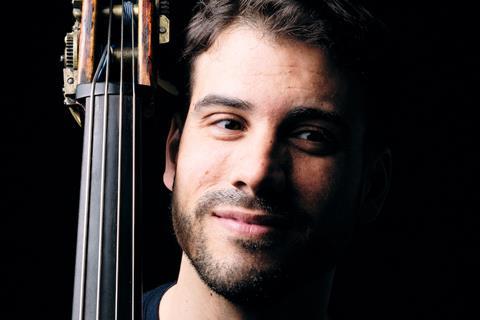To coincide with the launch of his new album, the double bassist considers some ways of approaching transcriptions on his instrument

As bass players we have a considerable amount of repertoire and an increasing number of newly written works that are great. However, some of the composers that I like the most happen to not have written much for the bass, such as Mozart, Schubert, Haydn (he actually did write a bass concerto which is yet to be found!) and Beethoven.
I have played transcriptions of Schubert’s Arpeggione Sonata, Haydn’s Violin Concerto in G Major, Mozart’s Violin Sonata in E Minor, Schumann’s Adagio & Allegro as well as Brahms Cello Sonata Op.38 amongst others. I also recently edited and recorded Schumann’s Fantasy Pieces and the Franck Piano and Violin Sonata for the educational platform String Virtuoso (which can be found together with the performances and tutorials on www.stringvirtuoso.com). When approaching these masterpieces, I am always overwhelmed by their beauty, complete sense of form and structure, and harmonic depth and detail.
The most special pieces I have played came to me the same way as some of the greatest books I have read, they were always a gift or a recommendation by a friend.
After listening to me playing the Arpeggione Sonata by Schubert, the world-renowned bow maker (and my dear friend) based in The Hague, Luis Emilio Rodriguez-Carrington, suggested I should play the Haydn Violin Concerto in G Major as he thought the way it was written would suit me perfectly both musically and instrumentally. Just as with a book that you open and can’t put down, I went through the original urtext score and fell in love with the concerto. I listened to it and visualised myself playing it from that moment on.
Continuing on this journey, I listened to a lot of Haydn, one of my favourite composers. I knew many of his symphonies and concertos, but went deeper into his oratorios, the quartets and the piano sonatas to discover a world full of poetry and detail, yet with an immaculate architecture where the harmony paves the way for the most original and beautiful melodies.
The G major key is relatively bass friendly, so I found that a lot of the more virtuosic passages came more easily than expected. I would just lighten up my left hand and let the passages flow while figuring out the fingerings and bowings.
I find in classical period arrangements that often the technical difficulties arrive at the development sections, where the minor keys and rhythmic variations appear, unavoidably requiring one to use the thumb in a more challenging way and to handle more complex string crossings and changes of positions. This is usually the point where arrangements are needed. Occasionally some slurs will be impractical and you have to prepare the change of string very thoroughly, anticipating every movement with both left and right hands.
Read 5 reasons why I love playing viola transcriptions
Read Opera is key to string playing
Another challenge is to keep the sound and style light on the double bass, which is characterised by its darkness and heaviness. I am constantly searching for a sound that has a solid bass and middle register but also a clear brightness to it. In classical pieces you need to go further in this direction to get the music to flow and to speak as it was intended on its original instrument.
In Schumann, we encounter a different challenge: he writes endless slurs which facilitate the long lines he is trying to create. To achieve this on the double bass is difficult as our bow is shorter and we need to use more of it per note to project a clear and focused sound; if we fragment the slurs into many separate bows we need to elaborate with both the bow and left hand changes to maintain the original legato feeling and smoothness of these lines.
In my opinion, maintaining the perfect balance between slow and smooth shifting and anticipation of the bow changes and string crossing is the key to reproducing the legato that the long bows of the violin and the cello, or the breath of a clarinet, can reproduce easily in the pieces written for them.
The last aspects to take into account are the tessitura, register and the key. I like to maintain the original key as for me that is how the piece was conceived, and not all the keys are the same; I always associate the key with the piece. In order to respect this, the register on the bass can get a bit too high at times. We can invert the octaves but when doing so we have to observe whether it alters the general structure, repetitions of the motives and of course whether if it still sounds good. I love going into the top register, and because more often than not the transcriptions I have created come from higher-pitched instruments, this makes sense to me.
These are my ideas on approaching a transcription, and the ways that I try to transmit those ideas to my students. It is always important to get to know composers by researching the environment in which they worked, as well as the other pieces that they wrote, especially those for the voice: lieder, operas, oratorios. It is also important to consider the characteristic elements of those composers’ writing, historical context, and both the instrumental and lyrical context of the period when their pieces were written. In this way we can strive to preservie the sense of line and communication created by these wonderful composers when daring to play their music on our instrument.
To listen to Luis Cabrera’s new album Canto Interno, out today, click here
To watch a video clip of him performing his arrangement of Schumann’s Fantasy Pieces (1st movement), see below











































No comments yet